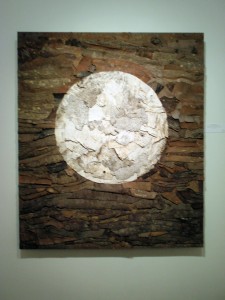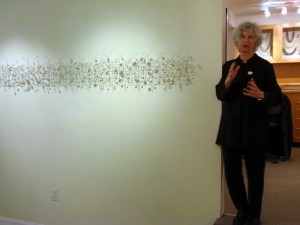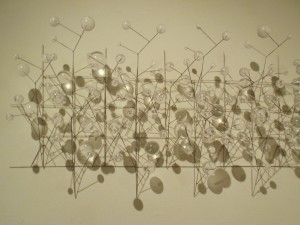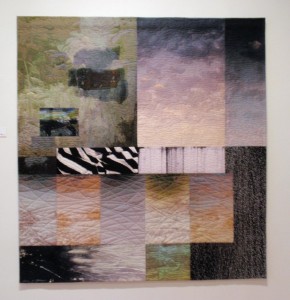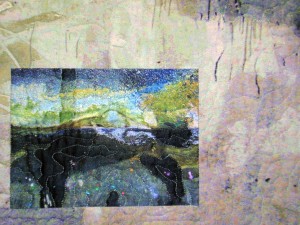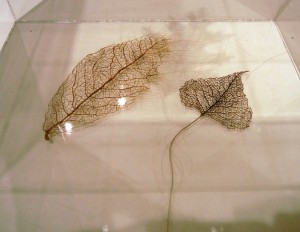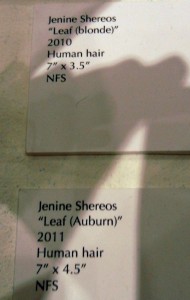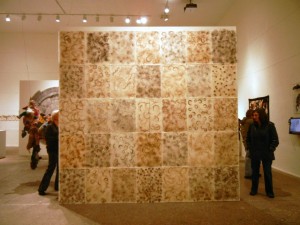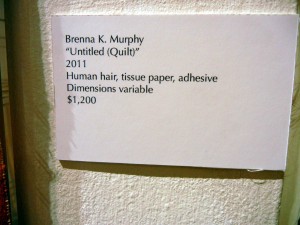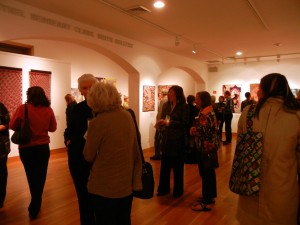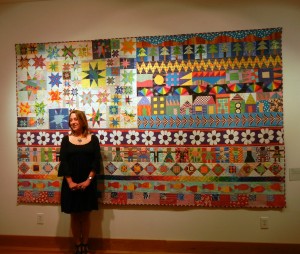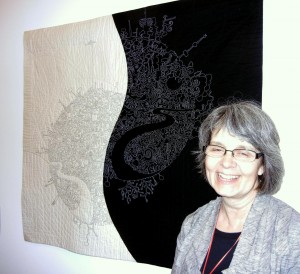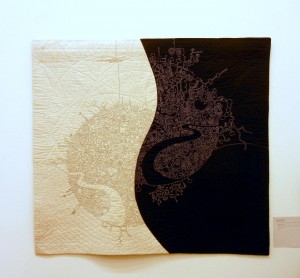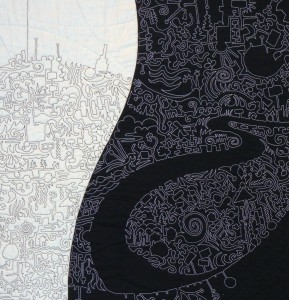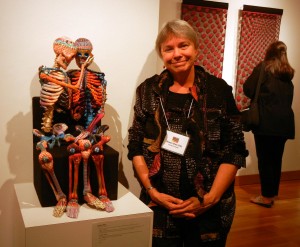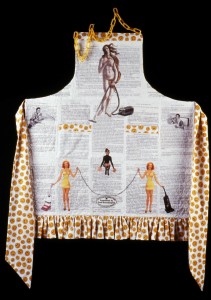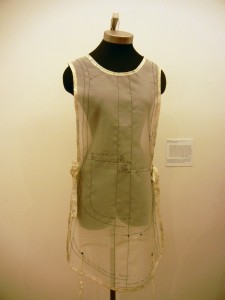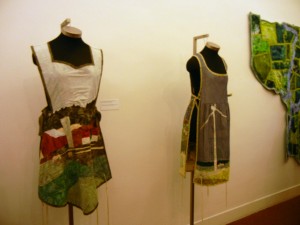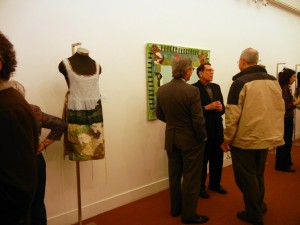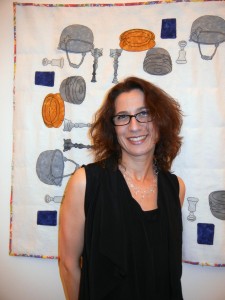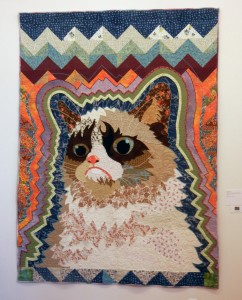
Hurray! Art Quilt Elements (AQE) 2014 opened this weekend at the Wayne Center for the Arts, just west of Philadelphia. This biennial juried show of 43 works–chosen from hundreds of entries–commands the well-deserved respect of the quilt world, and SHOULD command the respect of the comtemporary art world. Let me share my snaps, which in no way represent the grandeur, the texture, the tactile delight. Note that I’ve linked each artist’s name with her website–go and learn more if you have the time. Above, my picture of the Best in Show, Zeitgeist (fondly nicknamed Grumpy Cat), by Kristin LaFlamme. I think it’s got a real pop art meets 70s vibe meets anime, with a bit of Missoni stuck in. About 7 feet high, so it commands the space. Click on Kristin’s name above, and check out the personal musings, including her response to winning Best in Show, plus her thoughts on the Snyderman Works show which I reviewed in my last blog post.
On to other highlights of the show. There are MANY, and I don’t want to test your patience, and will also limit this show ‘n tell to those works of artists who were present and granted me permission to share. Again, let me urge you to click on the link of anyone whose work resonates with you, and get to know these amazing and innovative talents a little better.
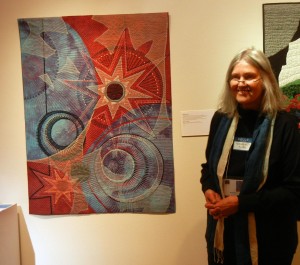
Marianne Burr explains her lavish use of hand-stitching and layering, as evidenced so richly in “Eleven 3 Thirteen,” above.
Below, Cynthia L. Vogt, “Otaru Winter” is elegance incarnate, with an Asian accent. Silk log cabin blocks set off the lines that represent Japanese rooftops peeking through in the snow.
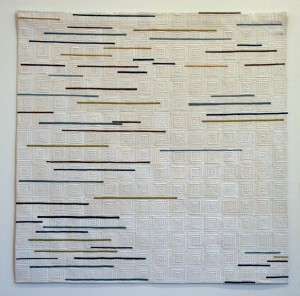
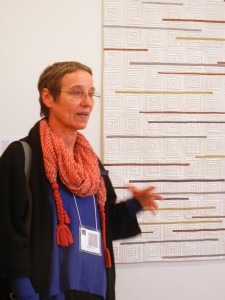
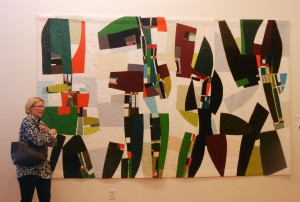
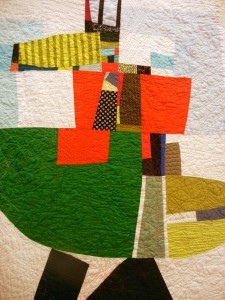
Quite possibly the largest piece in the show: Elizabeth Brandt‘s Random Thoughts,” 130″ x 81″. Part of her Karma series, and for me, the karma is abstract expressionist art that rivals any work at MOMA. BTW, her improvisational process is followed by lots of free motion stitching — on her regular sewing machine. Did I mention the dimensions–130″ x 81″? Rolled into the harp of a regular machine?!?
I took a day off to bask in the community of my creative betters, having signed up for a Studio Art Quilts Association (SAQA) symposium. Fascinating to see how quilt artists work fiber into their lives, peering by way of PowerPoint into a few studios to understand how they live and work. It was such a nurturing environment of artists who share the results of their struggles, experiments, and relentless journeys from perceived failure to success. I am absolutely in awe of those who make it their business to make art.
Joy, joy, lucky me, I got to sit at a table of uncommon women, all whose work has been celebrated in major shows:
- Dianne Koppisch Hricko, the mistress of transparency
- Amy Orr , the high priestess of used credit cards and other post-consumer ephemera (see my post about FiberPhiladelphia 2012–which Amy directed, and specifically my visual rave of her House of Cards)
- Katherine Knauer, whose art quilt, “Fracked,” went deep to make a powerful environmental statement
- And the tres charmante Benedicte Caneuill — her piece in the show, “Jungle Fever,” had me begging her to teach a workshop where I, too might drag combs, rubber styluses, and trowels over wet painted cloth, then cut it up, trade with other students, and compose away. She is waaayyy too humble.
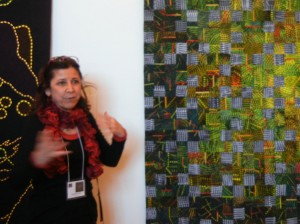
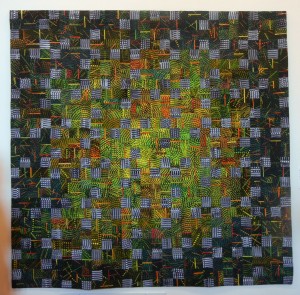
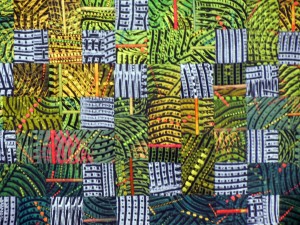
AQE and SAQA events fill my head with inspiration and aspiration. Why am I blogging….and cooking and cleaning and catering to loved ones and doing volunteer work and…..when I could be playing with cloth? How do you set aside the mainstays of living for art as a pastime, and find the time to create? How do you lose the guilt to quilt?
And who am I to kvetch, when I get to see such glorious creations up close and personal, and meet the unique talents behind them?!


